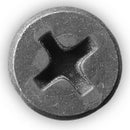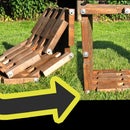Introduction: Wheatpaste
Wheatpaste is a very simple glue that will cost you under a buck a gallon to make. It's just flour and water. The main advantage of wheatpaste is not only its cost, but if you need large quantities of glue, you probably already have everything you need in your kitchen. No need to run to the store and buy anything.
Step 1: Background (skip to Recipe Below)
There are lots of different ratios for flour to water posted online, but people who make it in large batches, and actually know what they're doing for recommend a ratio of flour to water 1:4.
(As in one cup flour and 4 cups water.) This ratio is suitable for glue, and when dry it will appear fairly clear, so it is the ratio I will use.
Wheatpaste is known to be just as strong as diluted white glue (stronger than straight glue) when used on paper or pours materials.
White flour is recommended over whole wheat flour, although whole wheat can be used. Whole wheat contains all parts of the wheat: fiber, protein, and endosperm. White flour has been processed to contain only the endosperm which is almost entirely starch.
(As in one cup flour and 4 cups water.) This ratio is suitable for glue, and when dry it will appear fairly clear, so it is the ratio I will use.
Wheatpaste is known to be just as strong as diluted white glue (stronger than straight glue) when used on paper or pours materials.
White flour is recommended over whole wheat flour, although whole wheat can be used. Whole wheat contains all parts of the wheat: fiber, protein, and endosperm. White flour has been processed to contain only the endosperm which is almost entirely starch.
Step 2: Basic Recipe
Combine 1 part flour to 4 parts water in a large saucepan.
Whisk constantly to prevent chunks from forming.
Heat to just below a boil until it has reached the desired consistency.
The glue can now be used immediately. If you plan to use your glue when it has cooled, be sure to make the glue a little thinner than you want it, because it will thicken up. Also, glue feels a lot less disgusting on your hands when it's not cold.
You should use the glue soon, because un-dried glue will start to smell after a couple days if nothing is added to prolong its shelf life.
Whisk constantly to prevent chunks from forming.
Heat to just below a boil until it has reached the desired consistency.
The glue can now be used immediately. If you plan to use your glue when it has cooled, be sure to make the glue a little thinner than you want it, because it will thicken up. Also, glue feels a lot less disgusting on your hands when it's not cold.
You should use the glue soon, because un-dried glue will start to smell after a couple days if nothing is added to prolong its shelf life.
Step 3: Adding Things
Wheatpaste will work completely fine with just flour and water, some say you can achieve better properties in the glue by adding things, but others argue against adding anything to it, therefore I cannot confirm or disprove the flowing, it is simply all the comments from wheatpaste recipes online rolled together:
Salt: one spoonful or more of salt per 1/4 gallon will increase the shelf life of unused glue, and dismiss any chance of the glue rotting while drying. People also use it in freezing temperatures to lower their glues freezing point, but some say it but increases dry time exponentially, especially in the cold. Add anytime as long as it dissolves.
Sugar: two spoonfuls or more of sugar per 1/4 gallon will make the glue "stickier" when wet, and could increase dry strength due to the crystalline structure of glucose, but most say it is completely unnecessary. I think it slightly caramelizes to help thicken the mixture. Add near end of heating to prevent carmalization.
Cinnamon/Peppermint extract: 5 drops per 1/4 gallon will make the unused glue rot slower, allowing it to keep for several weeks. Add any time.
Alum: one spoonful per 1/4 gallon will also make the glue rot slower, allowing it to keep for several weeks. Possibly a thickening agent as well. Add near end of heating.
Vinegar: one spoonful per 1/4 gallon is also known to make the glue rot slower, allowing it to keep for several weeks. Also known to increase the durability of the dry wheatpaste. Add near end of heating.
Borax: two spoonfuls per 1/4 gallon may help reduce the smell while the wheatpaste is wet. May also change consistency for the better. Add near end of heating.
Glue: Adding glue or a powdered glue such as wallpaper paste MAY strengthen the glue, but also add to the cost. Wallpaper paste is sometimes know to be weaker than wheatpaste. Don't add too much or the glue will be too thick and wont soak into pores. Add near end of heating.
Sawdust: Sawdust added to almost any glue will increase it's gap-filling ability. Could be used to make molds. I made a cardboard sawdust putty with wheatpaste in my Cardboard Lumber instructable. Add any time.
Salt: one spoonful or more of salt per 1/4 gallon will increase the shelf life of unused glue, and dismiss any chance of the glue rotting while drying. People also use it in freezing temperatures to lower their glues freezing point, but some say it but increases dry time exponentially, especially in the cold. Add anytime as long as it dissolves.
Sugar: two spoonfuls or more of sugar per 1/4 gallon will make the glue "stickier" when wet, and could increase dry strength due to the crystalline structure of glucose, but most say it is completely unnecessary. I think it slightly caramelizes to help thicken the mixture. Add near end of heating to prevent carmalization.
Cinnamon/Peppermint extract: 5 drops per 1/4 gallon will make the unused glue rot slower, allowing it to keep for several weeks. Add any time.
Alum: one spoonful per 1/4 gallon will also make the glue rot slower, allowing it to keep for several weeks. Possibly a thickening agent as well. Add near end of heating.
Vinegar: one spoonful per 1/4 gallon is also known to make the glue rot slower, allowing it to keep for several weeks. Also known to increase the durability of the dry wheatpaste. Add near end of heating.
Borax: two spoonfuls per 1/4 gallon may help reduce the smell while the wheatpaste is wet. May also change consistency for the better. Add near end of heating.
Glue: Adding glue or a powdered glue such as wallpaper paste MAY strengthen the glue, but also add to the cost. Wallpaper paste is sometimes know to be weaker than wheatpaste. Don't add too much or the glue will be too thick and wont soak into pores. Add near end of heating.
Sawdust: Sawdust added to almost any glue will increase it's gap-filling ability. Could be used to make molds. I made a cardboard sawdust putty with wheatpaste in my Cardboard Lumber instructable. Add any time.
Step 4: Microwave Wheatpaste
If you don't want to bother cleaning a sticky saucepan, or don't have access to a stove, small batches of wheatpaste (suitable for an entire paper mache project) can be made in the microwave:
Use 1 part flour with 4 parts water in a Mason jar or any other microwave-safe container.
Microwave for a minute at a time until it reaches the right consistency.
Whisk the mixture very well in between minutes to prevent chunkiness.
Once the glue gets ever so slightly thicker, microwave for less than 30 seconds at a time, because the glue thickens exponentially fast.
Use 1 part flour with 4 parts water in a Mason jar or any other microwave-safe container.
Microwave for a minute at a time until it reaches the right consistency.
Whisk the mixture very well in between minutes to prevent chunkiness.
Once the glue gets ever so slightly thicker, microwave for less than 30 seconds at a time, because the glue thickens exponentially fast.
Step 5: Uses...
Wheatpaste will glue any porous paper to another with ease and dry to a rock-hard finish. It will also stick to many other porous materials such as concrete and wood. You can apply wheatpaste with a paintbrush, foam brush, roller, or just a piece of cardboard will work fine. Like all glues, apply only a very thin coat to both materials and stick together for best strength. If you are doing anything like paper mache, soaking your pieces in wheatpaste and using them will create help create very rigid structures. The glue will harden fairly quickly (an hour or two), but the paper will still be very wet for at least one day. A fan can speed up the process.
Examples:
graffiti posters (link to Stencil Revolution forum, they have a nice discussion on wheatpaste)
paper mache (happens to be the only other instructable with a wheatpaste recipie)
decoupage (nice for covering tables)
collage
Please rate this instructable and ask any questions you have.
Examples:
graffiti posters (link to Stencil Revolution forum, they have a nice discussion on wheatpaste)
paper mache (happens to be the only other instructable with a wheatpaste recipie)
decoupage (nice for covering tables)
collage
Please rate this instructable and ask any questions you have.






